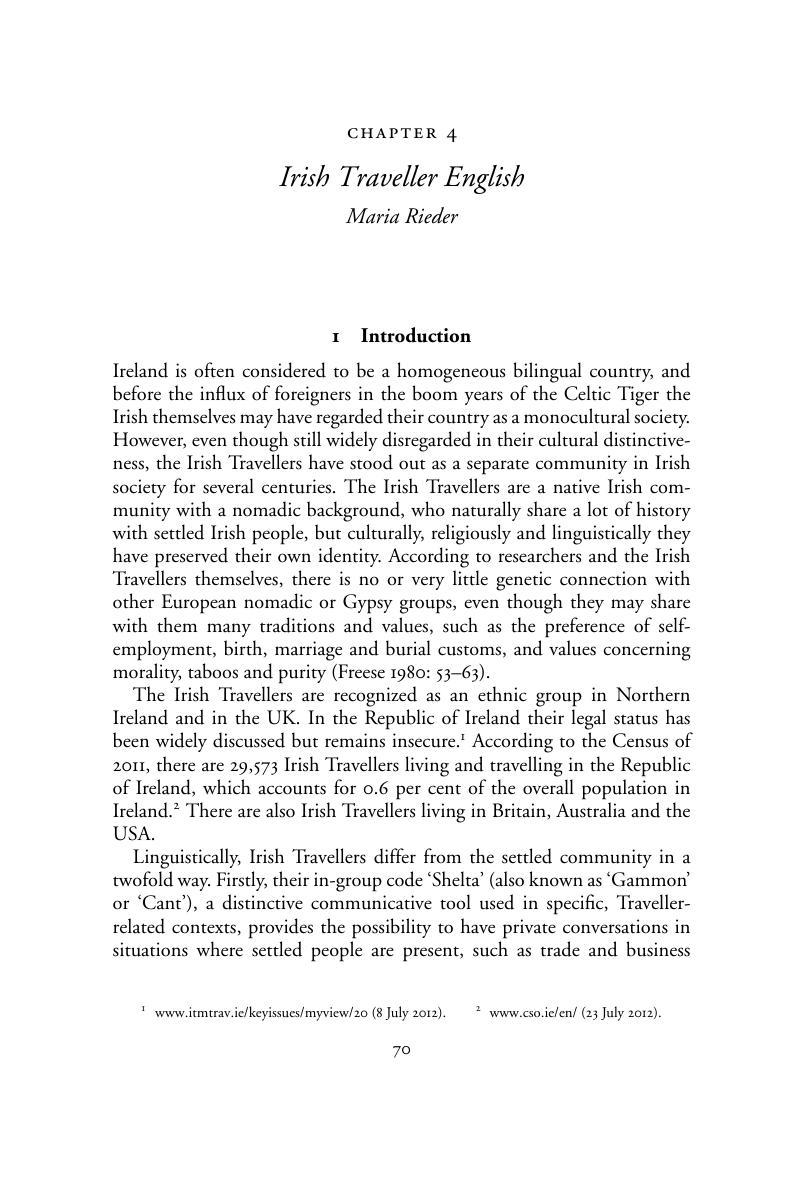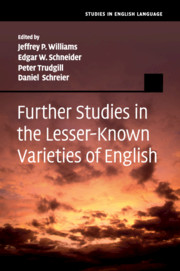Book contents
- Further Studies in the Lesser-Known Varieties of English
- Studies In English Language
- Further Studies in the Lesser-Known Varieties of English
- Copyright page
- Contents
- Maps
- Tables
- Contributors
- Chapter 1 Introduction
- Part I Europe
- Chapter 2 Maltese English
- Chapter 3 Gibraltar English
- Chapter 4 Irish Traveller English
- Part II The Americas
- Part III Asia and the Pacific
- Index
- References
Chapter 4 - Irish Traveller English
from Part I - Europe
Published online by Cambridge University Press: 05 May 2015
- Further Studies in the Lesser-Known Varieties of English
- Studies In English Language
- Further Studies in the Lesser-Known Varieties of English
- Copyright page
- Contents
- Maps
- Tables
- Contributors
- Chapter 1 Introduction
- Part I Europe
- Chapter 2 Maltese English
- Chapter 3 Gibraltar English
- Chapter 4 Irish Traveller English
- Part II The Americas
- Part III Asia and the Pacific
- Index
- References
Summary

- Type
- Chapter
- Information
- Further Studies in the Lesser-Known Varieties of English , pp. 70 - 96Publisher: Cambridge University PressPrint publication year: 2015
References
- 4
- Cited by



